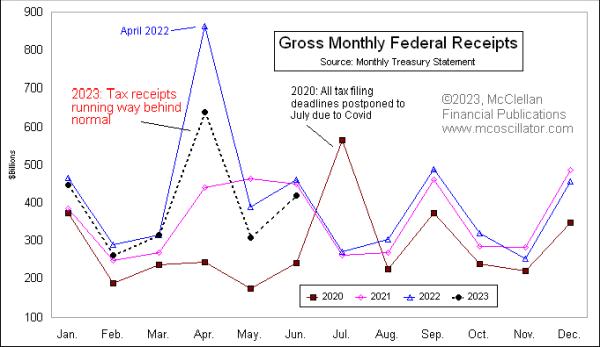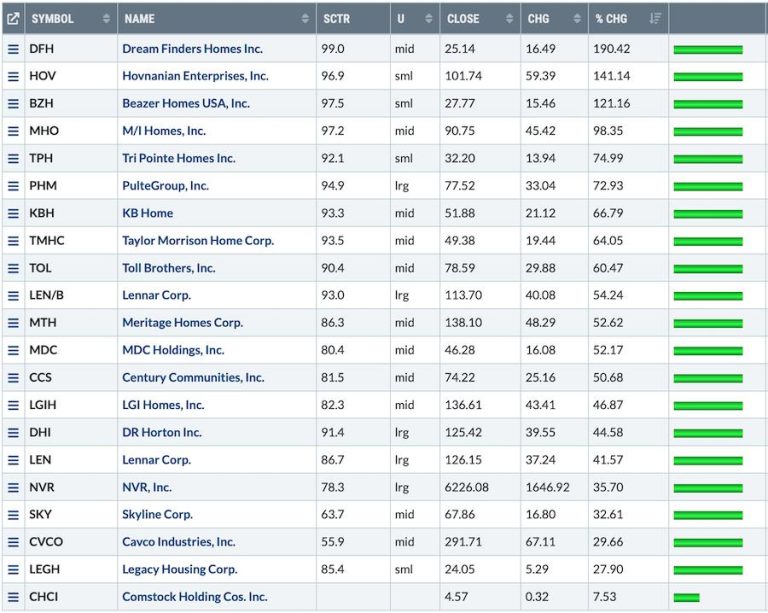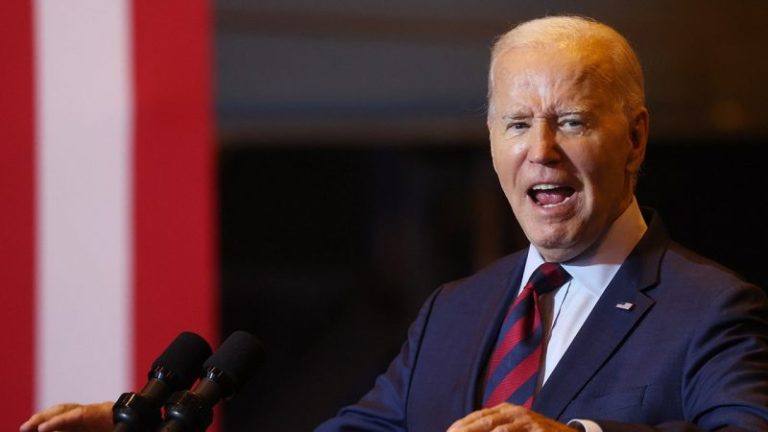The next couple of weeks should prove to be an exciting time for the stock market. Technology stocks will be dominating the earnings calendar, with Microsoft (MSFT), Alphabet (GOOGL), and Meta Platforms (META) reporting on the week of July 24. Amazon (AMZN) and Apple (AAPL) will report the following week. Given that tech stocks have driven the broad market rally, a lot is riding on their earnings. If earnings come in strong, the upside momentum could continue, but any sign of weakness, either from the numbers or guidance, could result in a pullback in the stock market.
Stay on top of earnings season by visiting the StockCharts Earnings Calendar. From Your Dashboard or Charts & Tools, scroll down to the Summary Pages and click on Earnings Calendar. Click on Upcoming Earnings and see which companies are reporting earnings.
A Technical Look at the Nasdaq 100 Index
Let’s take a look at the weekly chart of the Nasdaq 100 index ($NDX). The index has gone up almost 50% in 2023 so far. The chart below shows that $NDX has broken through most resistance levels and is on its way to its all-time high. The September 2021 high is the last resistance level the index has to push through; next week’s earnings report could be the deciding factor.
CHART 1: WEEKLY CHART OF NASDAQ 100 INDEX ($NDX). The index has bounced off the 61.8% Fibonacci retracement level. Will it push through its September 2021 high and reach a new high?Chart source: StockCharts.com (click chart for live version). For educational purposes.
Looking at the Fibonacci retracement levels from the 2020 low to the 2021 high, you can see that $NDX bounced off the 61.8% retracement level. For the most part, the various Fib retracement levels have acted as support and resistance levels during the upward move. Now it’s almost at its high. So will $NDX reach a new high in 2023?
If you look at the daily chart, $NDX has stayed above its 21-day exponential moving average (EMA) since mid-March 2023, except for a couple of times when it briefly dipped below it. If earnings from the Tech companies aren’t so great, then we could see a repeat of the counter trend move after Tesla (TSLA), Netflix (NFLX), and Taiwan Semiconductors (TSM) reported earnings. If $NDX falls below its 21-day EMA, you can expect a significant pullback in Tech stocks. But if earnings come in strong and the 21-day EMA holds, be ready for more upside.
CHART 2: DAILY CHART OF THE NASDAQ 100 INDEX. The 21-day EMA could act as a first support level, and if the index falls below it, expect a significant pullback. But if earnings come in strong, then there could be further upside.Chart source: StockCharts.com (click chart for live version). For educational purposes.
Looking at the Year-to-Date PerfChart of the five Big Tech stocks reporting earnings, META is the clear winner and GOOGL is the laggard.
CHART 3: PERFCHART OF MSFT, GOOGL, META, AMZN, AND AAPL. META is the clear winner in the group.Chart source: StockCharts.com. For educational purposes.
If you look at the price charts of all five stocks using the layout feature in StockChartsACP (see below), you can see that META and AMZN are struggling to hold on to the support of the 21-day EMA, AAPL and MSFT are hanging on above their 21-day EMA, and GOOGL is trading below its 21-day EMA and 50-day simple moving average (SMA).
CHART 4: COMPARING META, MSFT, AMZN, GOOGL, AND AAPL. The 21-day EMA is an important support level for these stocks. A close below that level could mean further pullbacks ahead.Chart source: StockChartsACP. For educational purposes.
Since Tech stocks have seen a significant rise in their value, it’s possible they may be overvalued. But with AI in the picture, it could mean more upside moves, especially if the integration of AI works in their favor.
Then There’s the Fed
According to the CME FedWatch Tool, there’s a 98.9% chance the Fed will raise interest rates by 25 basis points on July 26. Core inflation still has to drop by more than two percentage points to reach the 2% goal the Fed is trying to achieve. When Fed Chairman Jerome Powell takes the podium on Wednesday, investors will be eager to hear if past interest rate hikes have weaved into the economy, and what it would take to reach the 2% inflation goal.
Final Thoughts
There’s a lot to focus on next week—earnings and interest rates. Will Tech stocks propel the equity market higher despite economic uncertainties? It’ll be a week you don’t want to miss.
End of Week Wrap Up
US equity indexes mixed; volatility down
$SPX up 0.03% at 4536.32, $INDU up 0.01% at 35228.48; $COMPQ down 0.22% at 14032.81$VIX down 2.64% at 13.62Best performing sector for the week: EnergyWorst performing sector for the week: Communication ServicesTop 5 Large Cap SCTR stocks: Super Micro Computer (SMCI), NVIDIA Corp. (NVDA), Palantir Technologies (PLTR), DraftKings (DKNG), Coinbase Global (COIN)
On the Radar Next Week
Big Tech Earnings. Some companies reporting next week: Meta Platforms (META), Microsoft (MSFT), Alphabet (GOOGL). Other companies reporting include Verizon (VZ) Coca-Cola (KO), AT&T (T), Boeing (BA), McDonalds (MCD), Chipotle (CMG), Ford (F), and many more.June New Home SalesFed Interest Rate DecisionFed Press Conference
Disclaimer: This blog is for educational purposes only and should not be construed as financial advice. The ideas and strategies should never be used without first assessing your own personal and financial situation, or without consulting a financial professional.










